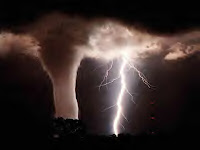Hong Kong Disneyland is finally on a roll. After years of disappointing results, Disney’s (DIS) first foray into Greater China earned HK$242 million ($31 million) in the year ending in September, the company announced yesterday. That profit was on revenue of HK$4.9 billion, 15 percent more than 2012.
Last year was the second consecutive year in the black for Hong Kong Disneyland, a joint venture between Walt Disney and the Hong Kong government. Hong Kong was the smallest of Disney’s parks and dedicated Magic Kingdom fans expressed disappointment after the 2005 debut with the limited number of attractions. When the park opened, for instance, it was missing Autopia and It’s a Small World, two Disneyland classics. The Disney has since made amends, launching those attractions as well as three new lands: Toy Story Land, with Woody, Buzz, Jessie and pals; Grizzly Gulch, anchored by a Wild West-themed roller coaster; and Mystic Point, featuring a haunted mansion that’s not very scary. (Alas, there seems to be little demand for one of my old Disneyland favorites, the Enchanted Tiki Room.)
Even with the expansion, which increased the total park size by about one-fourth, Hong Kong Disneyland is still small compared to Disney’s resorts in California, Florida, Japan and France. And with Disney scheduled to open a park in Shanghai next year, the southern Chinese park has plans to keep growing. Next up is Iron Man Experience, a ride based on the Marvel superhero popularized by Robert Downey Jr. in the hit Disney movies, scheduled to open in 2016. Hong Kong Disneyland also wants to add a third hotel, since occupancy rates have grown from 70 percent in 2009 to 94 percent last year. If Hong Kong’s legislature approves the proposal, the new hotel will open in 2017 and increase room capacity by 75 percent to 1,750.
One reason Disney needs to keep expanding is the new competition in the region. On the other side of the Pearl River Delta, casino operators in Macau want to make the city more than just a gambling destination. They’re eyeing Hengqin, an island right next to Macau but on the Guangdong side of the border that has ample space for the golf courses, theme parks, and other attractions necessary if the tiny former Portuguese colony has any hope of becoming the Orlando of China. Galaxy Entertainment, run by Asia’s second richest man, Lui Che Woo, wants to invest HK$10 billion in Hengqin.
A first test of Hengqin’s attractiveness is Chimelong Ocean Resort, a new Sea World-like park run by a mainland-based theme-park operator called Guangdong Chimelong Group. During the week-long Chinese New Year holiday, the new Chimelong park attracted about half a million visitors with rides, an aquarium, and a circus, according to the local government data. The park “may help boost Macau visitors this year and beyond, which would likely benefit casinos,” Bloomberg Industries analysts Tim Craighead and Margaret Huang wrote last week. Many of the Chimelong park visitors were tourists from Guangdong who were on packaged tours to Hong Kong and Macau, so the Hengqin park might draw people away from the Magic Kingdom.
Still, Hong Kong Disneyland execs should be rooting for success in Hengqin for Chimelong. As Disney has shown in Orlando and Anaheim, the company’s parks can thrive as part of a bigger cluster of family attractions. That’s especially important for Hong Kong Disneyland in the countdown to 2015. When there’s a Disney park in the mainland itself rather than on the other side of a border crossing, the more reasons Chinese tourists have to skip Shanghai and travel down to Hong Kong, the better.




